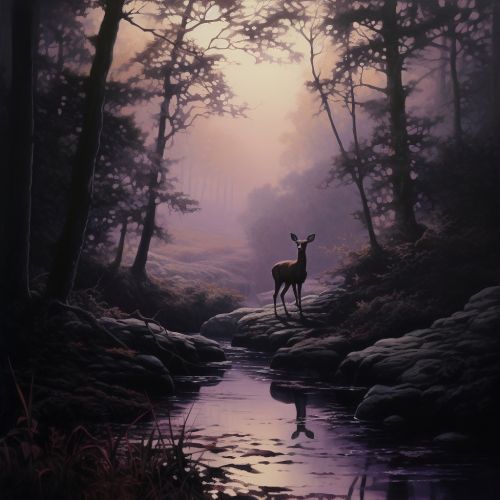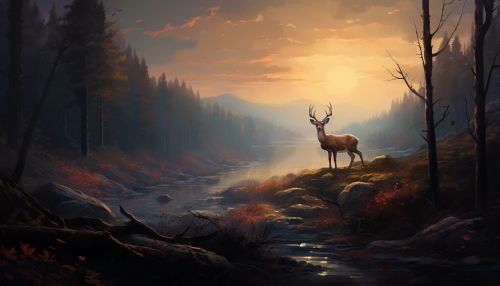Crepuscular
Definition
Crepuscular is a term in the field of zoology that describes animals that are primarily active during the twilight period at dawn and dusk. The term originates from the Latin word "crepusculum", meaning twilight. Crepuscular animals are distinct from diurnal and nocturnal species, and have adapted to this specific period of light intensity.
Characteristics
Crepuscular animals have specific adaptations that allow them to thrive during the twilight hours. These adaptations often include enhanced senses such as sight and hearing, which are crucial for survival in low-light conditions. For instance, many crepuscular animals have large eyes to maximize the amount of light they can capture.


Examples of Crepuscular Animals
There are many species of animals that are considered crepuscular. Some of the most well-known examples include:
- Domestic Cats: Domestic cats are often most active during the twilight hours, which is a behavior inherited from their wild ancestors.
- Rabbits: Both wild and domesticated rabbits are typically most active during dawn and dusk.
- Deer: Many species of deer are crepuscular, including the white-tailed deer and the mule deer.
- Moths: Many species of moths are crepuscular, using the twilight hours to feed and mate.
Adaptations
Crepuscular animals have developed a number of adaptations to survive and thrive in the low-light conditions of dawn and dusk. These adaptations include:
- Enhanced Vision: Many crepuscular animals have large eyes relative to their body size to capture as much light as possible. Some species also have a reflective layer behind the retina called the tapetum lucidum, which increases the amount of light available to the photoreceptor cells.
- Acute Hearing: In low-light conditions, hearing can be more important than vision for detecting predators or prey. Many crepuscular animals have developed acute hearing to compensate for the reduced visibility.
- Camouflage: The low-light conditions of twilight can provide excellent cover for animals with the right coloring or patterns. Many crepuscular animals have fur or feathers that blend in with the colors of dawn or dusk.
Impact on Ecosystem
Crepuscular animals play a significant role in their ecosystems. They often serve as a crucial link in the food chain, acting as predators for some species and prey for others. Their activity during the twilight hours also affects the behavior of diurnal and nocturnal animals.
